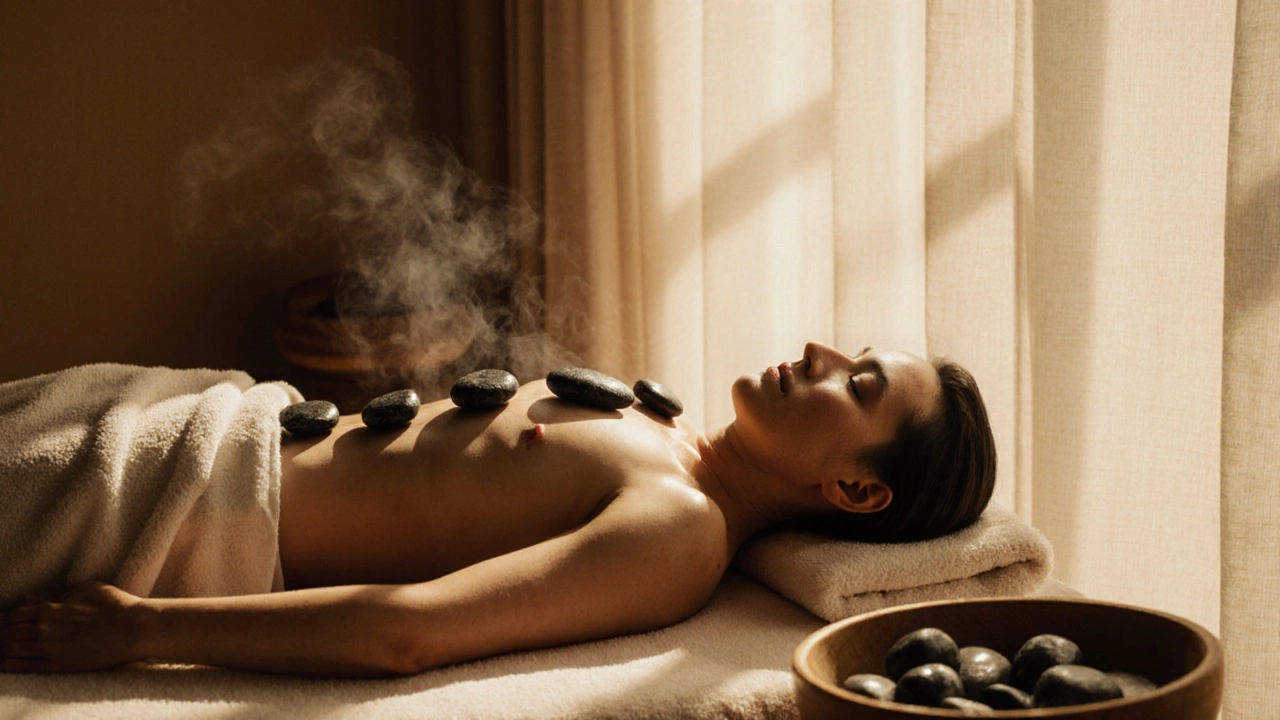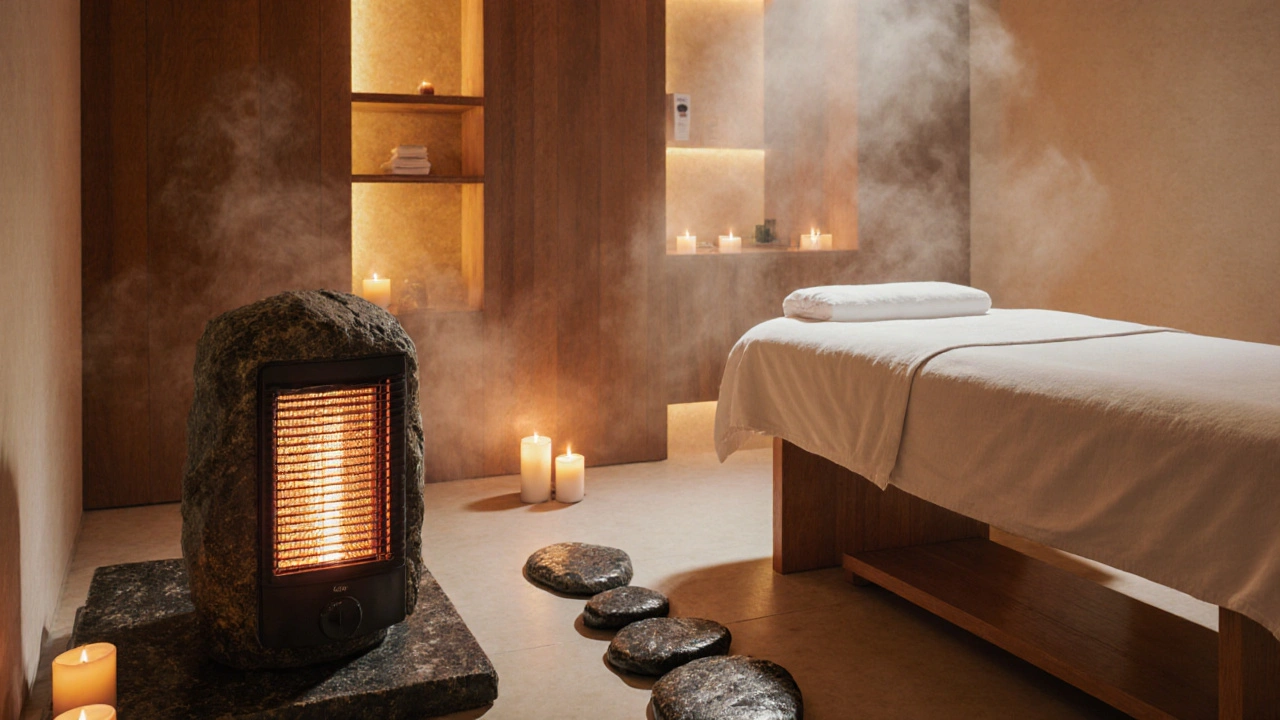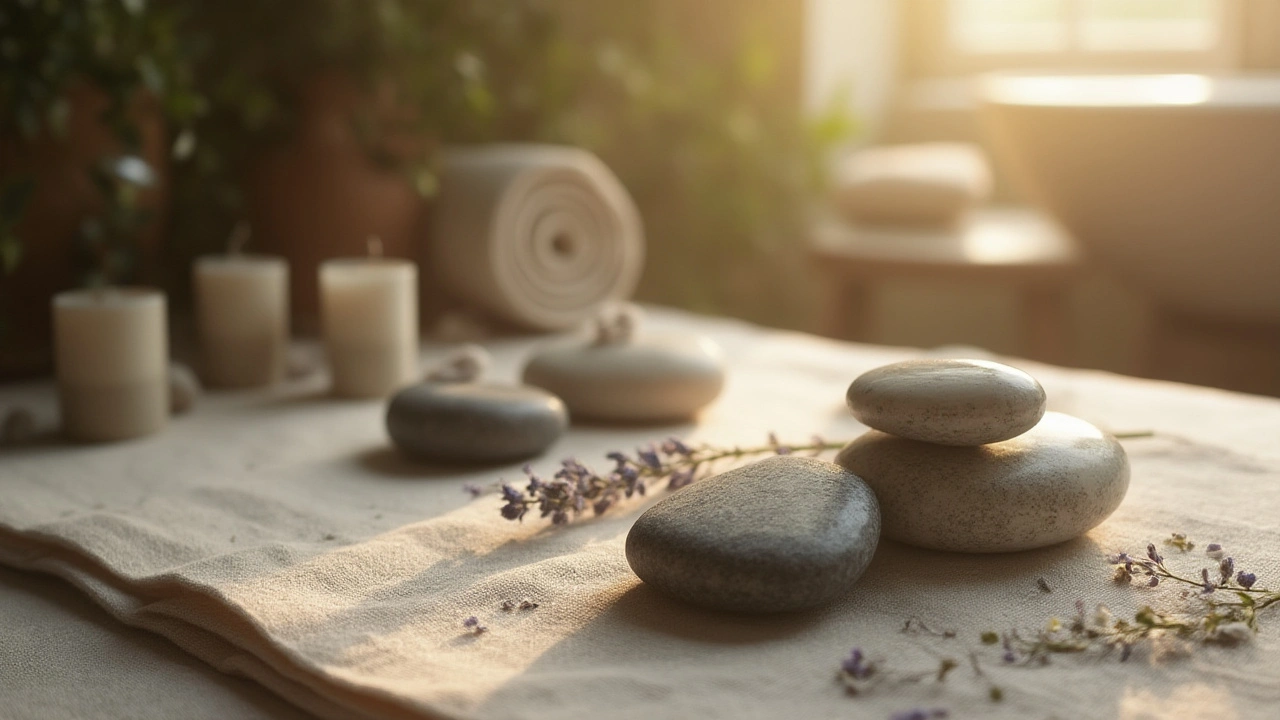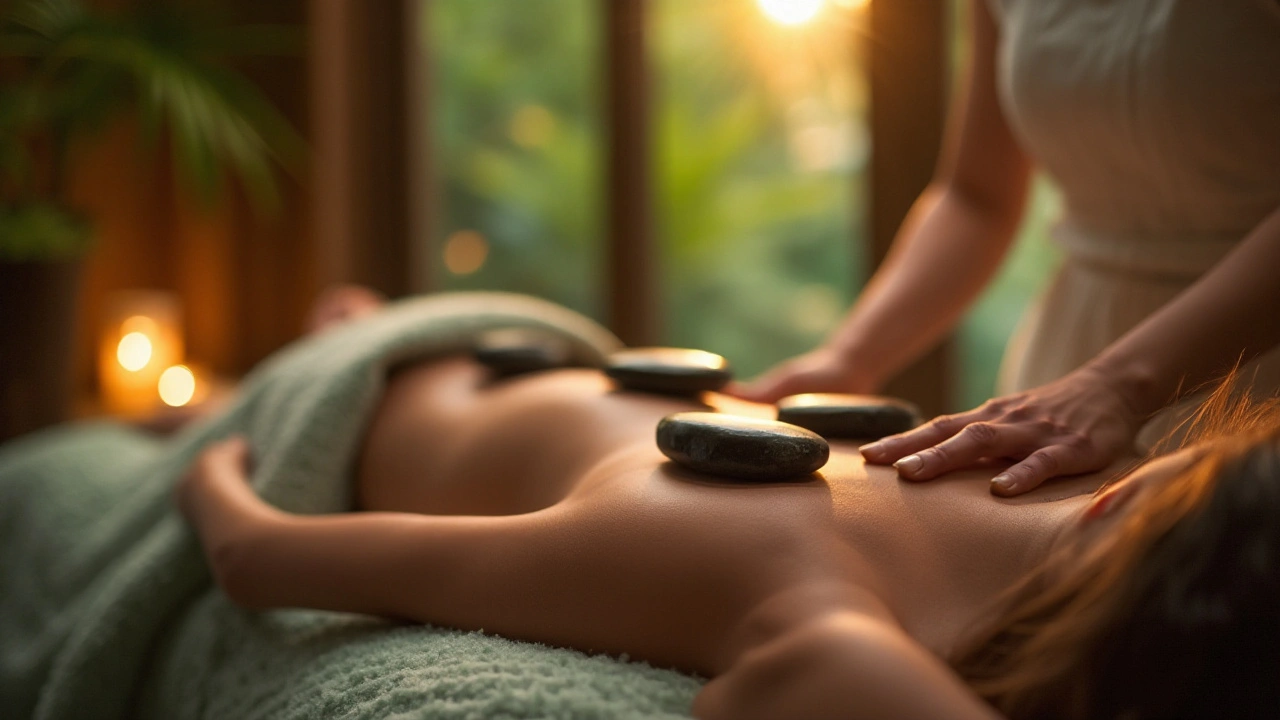Stone Therapy: Hot and Cold Stone Massage — Benefits & What to Expect
Warm stones hold heat longer than your hands and that simple fact makes stone therapy uniquely effective at easing tight muscles. Stone therapy covers hot-stone and cold-stone work: therapists use smooth basalt stones heated in water and sometimes chilled river stones to calm or stimulate tissues quickly and gently.
Why try stone therapy? The heat from hot stones reaches deeper muscle layers, reducing tension and helping circulation. Cold stones reduce inflammation, numb soreness, and can sharpen circulation when used after heat. Together they balance soreness, reduce stress, and speed recovery after workouts or long days at a desk.
Stone therapy is practical: expect a full-body or targeted session lasting 45–90 minutes. Therapists place warmed stones along the spine and massage with them or alternate hot and cold stones on sore spots. You’ll feel deep warmth, release, and often quicker relief than with hands-only massage. Many clients report improved sleep and lower anxiety after a single session.
What happens in a session and who should be cautious
When you arrive, your therapist checks health history and skin sensitivity. Stones are tested for a safe surface temperature—usually around 120–130°F (49–54°C) for hot stones, but clinicians adjust to comfort. If you have diabetes, open wounds, varicose veins, pregnancy, recent surgery, or poor circulation, tell your therapist beforehand. These conditions often require skipping stones or using lower temperatures. If anything feels too hot or painful, speak up immediately.
Sessions usually start with gentle hands-on warming, followed by stone placement and massage. Heat sinks into muscles so therapists use less pressure, which helps if you dislike deep tissue work. Cold stones are used sparingly—mostly for swelling, headaches, or post-exercise recovery. Expect light oil on the skin and some temporary red marks where circulation increases.
At-home tips, safety, and choosing a therapist
You can mimic elements of stone therapy at home: warm a towel or use a clean heating pad on tight areas for 10–15 minutes, then follow with gentle stretching. Don’t place a hot stone or pad directly on numb skin. Avoid homemade heated stones from unknown sources; professional stones are smooth basalt and heated in controlled warmers. Hydrate after your session—heat and massage release fluids from tissues.
To pick a therapist, look for proper training in stone massage and good hygiene—stones should be cleaned between clients. Read reviews and ask about temperature controls and health screening. Expect a fair price increase over a standard massage because of equipment and training.
Many people book stone therapy once a month for stress or weekly after training. After session expect mild soreness or tiredness for 24 hours; that means tissues are shifting. Eat light, avoid alcohol, and keep moving. Note any skin reactions and contact your therapist if anything feels wrong.
Stone therapy is a simple, effective tool for deep relaxation and recovery when done safely. If you want faster muscle release with less pressure, it’s worth trying once to see how your body responds.

Stone Therapy: The Ancient Healing Method Rediscovered
Stone therapy uses heated stones to ease muscle tension, reduce stress, and promote deep relaxation. Rooted in ancient traditions and backed by modern science, it’s a powerful tool for chronic pain and anxiety relief.

Discover the Magic of Stone Therapy for Stress Relief
Stone therapy uses heated stones to melt away stress, ease muscle tension, and calm the nervous system. Learn how this ancient practice delivers deep, drug-free relaxation-and why it works better than most modern methods.

Stone Therapy Guide: Benefits, Techniques & FAQs
Discover the full picture of stone therapy, from hot and cold stone massage to crystal healing, benefits, safety tips, DIY guidance, and FAQs in a concise, human-friendly guide.

Stone Therapy Benefits: Techniques, Science, and Everything You Need to Know
Discover the science, techniques, and unexpected perks of stone therapy. Learn how hot and cold stones can transform your body, mind, and everyday wellness.

Exploring Stone Therapy: Natural Healing Techniques and Benefits
Stone therapy is an ancient form of treatment that uses stones to promote relaxation and healing. This holistic method, often characterized by the use of hot or cold stones, is believed to help with physical ailments and emotional wellbeing. The article delves into the history and principles of stone therapy, explains its therapeutic benefits, and offers guidance on incorporating it into a wellness routine. It also provides insightful tips for those considering this natural approach to health.
Categories
- Health and Wellness (148)
- Alternative Therapies (86)
- Massage Therapy (40)
- Travel and Culture (15)
- Beauty and Skincare (9)
- Holistic Health (8)
- Health and Fitness (5)
- Spirituality (5)
- Other (2)
- Personal Development (2)
Popular Articles

Discover Hilot: A Unique Approach to Body Healing
Nov, 18 2023


